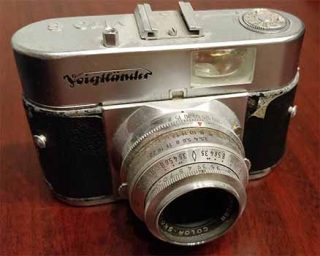The photographed picturesque public prosecutor
Last Friday I was sitting at the Itzehoe District Court, lay assessor’s court, with 2 other colleagues. It was the 2nd day of the trial. 3 defendants. Even the first day of the trial dragged on. A large number of procedural issues had to be clarified. After at least the victim and his girlfriend could be questioned on the first day, the first motion for recusal was made against a lay judge during the questioning of the first witness because of the use of a mobile phone during the main hearing.
The second day of the main hearing also dragged on. After most of the procedural issues had been clarified, the main hearing was still interrupted time and again. Among other things, once because the phone in the courtroom rang and the public prosecutor was told to call the public prosecutor’s office immediately. No further information was provided by the presiding judge. During the examination of the first witness that day, it was already around 2.20 pm, one of the constables brought a document to the judge’s table.
The judge interrupted the hearing, read through the letter and then immediately interrupted the main hearing.

Search warrant for photographed prosecutor
Still sitting at the judge’s table, the judge read the document with a smile on his face. It was a search warrant. One of the 3 defendants was to be searched. This was to lead to the discovery of a mobile phone. Further investigation proceedings have been initiated against one of the defendants for an alleged offence under the KUG (Art Copyright Act), see §§ 22, 23, 33 KUG. According to the prosecutor’s opening statement, the defendant allegedly took a photo of her during a break in the proceedings. The public prosecutor was of the opinion that the defendant had held his mobile phone in her direction and then made a movement that she interpreted as pressing the shutter button.
Her colleague’s introductory order states that she has examined the factual and legal situation and, after consultation with the head of the authority, it can be assumed that with an Internet-enabled mobile phone it is easy to distribute a recorded image in the directly connected network.
After the examination of the factual and legal situation, the result of the examination is said to have been communicated to the hearing representative by telephone. This was probably the interruption of the main hearing for the immediate telephone call to the public prosecutor’s office. She then filed a criminal complaint.
Search of the accused is unsuccessful
After the presiding judge had read out the search warrant, he ordered the constables to ensure immediately that no evidence was lost. And the constables were to ensure that the mobile phone was seized. They refused to seize the mobile phone as they were not responsible for this. “Then call the police!” the chairman then ordered. As he was not quick enough, he asked again when the mobile phone would be seized.
The witness was not allowed to leave his seat in the courtroom during this “photo session” so that he could not talk to his wife, who was supposed to be questioned afterwards.
The defence counsel for the defendant concerned then announced – during the interruption – that he would now like to file a motion for recusal against the presiding judge and the replacement of the public prosecutor as the representative for the hearing and that he was therefore proposing today’s interruption. During the interruption, the presiding judge promised that he could do so without losing his rights until the beginning of the next main hearing day. He was assured of this again in the minutes after re-entering the main hearing. The trial day was then cancelled.
What will happen next?
This case raises a number of legal issues. I have raised a few below:
In a trial where the entire row of seats is reserved for members of the press on the first day of the trial and a large number of members of the press are present, is the representative of the public prosecutor’s office a relative figure of contemporary history? Then even an act of dissemination would not be punishable.
If a photo was taken at all, can it be assumed that this photo is also disseminated within the meaning of the KUG, i.e. forwarded to third parties?
A photographed public prosecutor should be exempt from prosecution if the photo is not distributed.
If the photo has been taken but not yet distributed, the attempt stage has probably not yet been exceeded. However, the attempt is not punishable.
If I had filed a criminal complaint against the lay assessor who was typing on his mobile phone during the main hearing because I was of the opinion that he had also photographed me, the proceedings would – with 100 per cent probability – have been referred to the private prosecution route, Section 374 of the Code of Criminal Procedure.
Is there an instruction from the Attorney General on how to deal with criminal proceedings under the KUG?
